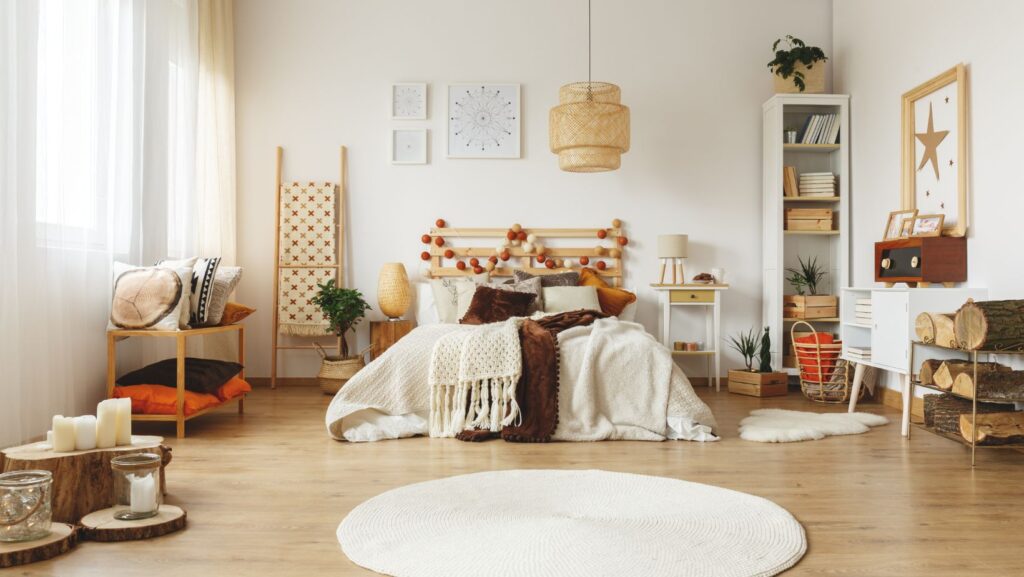Transforming a room can be as simple as changing the flooring. Custom area rugs are an effective tool in home redesigns, offering a tailored look that suits any space perfectly. They provide a cohesive and polished feeling by tying together various elements of decor.
The secret lies in the variety of custom rugs available. Different textures, patterns, and colors can fit seamlessly into any design plan. Whether you are looking to add warmth to a living room or a splash of color to a hallway, custom rugs can meet these needs precisely.
Moreover, the adaptability of these rugs allows homeowners to be creative and flexible in their decor choices. Customizing a rug to fit a room’s exact dimensions or color scheme ensures that it complements not just the furniture, but also the atmosphere of the space. This small yet impactful change can elevate the overall aesthetic, turning a room from simply decorated to stunningly designed.
Design Principles for Area Rug Selection
Choosing the right area rug involves understanding its size and scale, ensuring color and pattern harmony, and integrating texture and layering. Each element plays an important role in improving the room’s overall aesthetic and functionality.
Understanding Size and Scale
Proper rug size is essential to balance the room. In living rooms, an 8×10 or 9×12 rug often works best, fitting under the largest piece of furniture like a sofa. For smaller areas, consider a 5×8 or 4×6 rug. In bedrooms, an 8×10 rug should fit under a queen bed and nightstands. Keeping 10 to 20 inches of bare floor around the rug provides a balanced look.
Positioning the rug correctly affects the room’s flow. Centering a rug under the main seating arrangement or bed ensures everything feels cohesive. Always measure the space and furniture placement accurately before choosing a rug.
Color and Pattern Harmony
Harmony in color and pattern is necessary for a visually pleasing space. Rugs in neutral colors offer flexibility in decorating, allowing you to change other elements like paint and accessories easily. Matching the rug’s color scheme with the existing furnishings, such as vases, books, and throw pillows, ensures a unified look.

Contrasting patterns can add interest. It’s possible to mix floral or geometric patterns by varying the scale—pairing a large geometric design with a smaller floral one creates visual balance. Complementary colors help tie the whole room together, maintaining an aesthetically pleasing environment.
Integrating Texture and Layering
Texture adds depth and interest to any room. Choose materials like wool for a soft, luxurious feel or jute for a rustic touch. Layering rugs isn’t just a trend; it’s a practical way to combine different textures and patterns. Place a smaller Persian rug over a larger neutral one to create a focal point in the room.
Consider the room’s textiles, from furnishings to throw pillows, when choosing a rug. Coordinating textures with existing items ensures a cohesive look. Mixing different textures, like smooth silk with rough jute, adds dimension and warmth. Layering also offers the opportunity to play with colors and patterns without overwhelming the space.
Creating an Impactful Room Ambiance
To create an impactful room ambiance, attention must be paid to the arrangement of furniture, the use of decorative accents and lighting, and the incorporation of personal style to ensure cohesiveness and visual appeal.
Strategic Furniture Arrangement
Strategic furniture arrangement is important for both functionality and aesthetics. A well-thought-out layout ensures a good traffic flow and provides enough walkways for easy movement.

Furniture should be arranged to facilitate conversation and comfort. Sofas and chairs can be positioned to create a symmetrical look, promoting balance in the room.
Using rugs under the bed or nightstands can connect furniture pieces and define specific areas within a larger space. Leaving some negative space around furniture improves the room’s openness, preventing it from looking cluttered.
Decorative Accents and Lighting
Decorative accents and lighting add personality and warmth to a room. The choice of light fixture affects the room’s mood and functionality. Candles and elegant lamps can introduce a soft glow, while windows should allow natural light to brighten the space during the day.
Decorative accents like artwork and plants contribute to the room’s ambiance. Art can be chosen to reflect personal tastes or complement the room’s color scheme and style. Plants add a touch of nature and freshness, improving both aesthetics and air quality.
Incorporating Personal Style and Cohesiveness
Incorporating personal style is essential for a room to feel inviting and unique. This can be achieved through the selection of furniture, color schemes, and decor that reflect personal preferences. An eclectic mix of pieces can be used, but maintaining a cohesive look is key.
Using a consistent color palette or theme helps tie everything together. This approach ensures that different elements in the room work harmoniously, rather than clashing. Ensuring that the room feels well-coordinated promotes a sense of tranquility and satisfaction, making the space feel like home.
Conclusion
Custom area rugs can transform a room by adding warmth, color, and texture. They help define spaces, making them feel more organized and cozy. With the right rug, a redesigned room becomes a reflection of personal style and comfort.


More Stories
15 Cool & Unexpected Ways People Are Using Neon Signs in 2025
How Asbestos Testing Safeguards Modern Architecture Projects
Luxury Glassware for Yachts — Which Collections Are Worth Bringing On Board